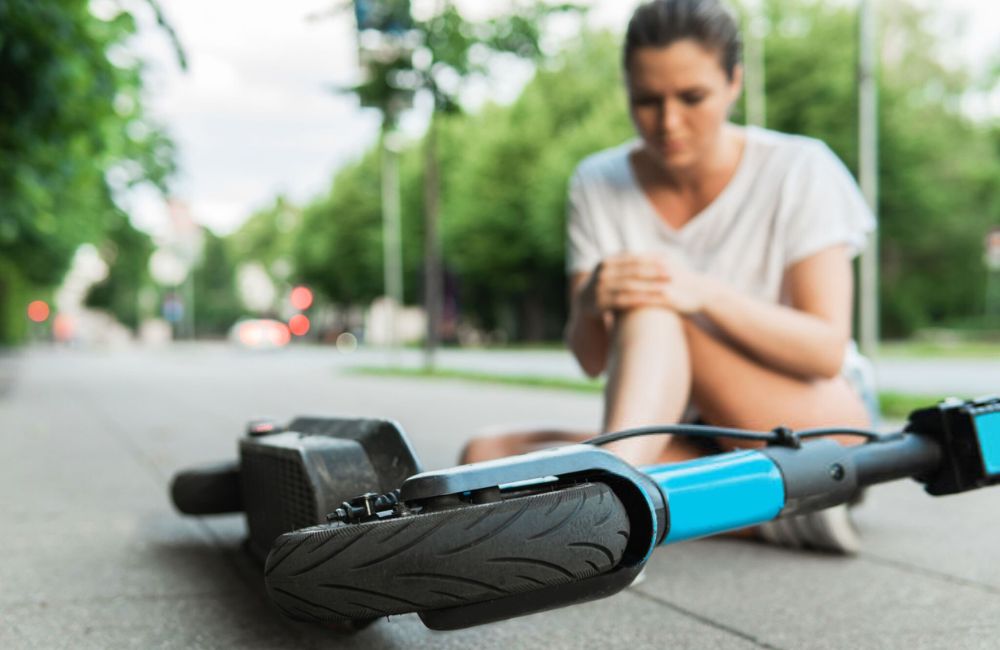Electric scooters are increasingly popular in the U.S., and California is no exception. However, there has been a sharp rise in scooter-related accidents. From 2017 to 2021, injuries from micromobility devices, including e-scooters, jumped by 127 percent, totaling 77,200 across the U.S., with deaths increasing from 5 to 48.
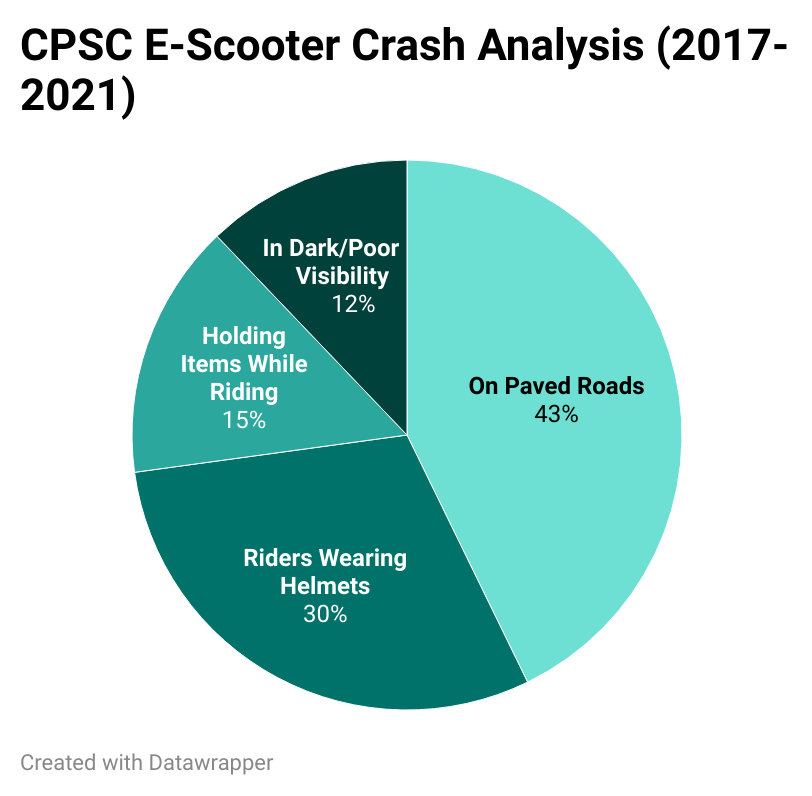

If you’ve experienced a fall off a scooter in California, understanding your rights and options is essential. These incidents, which include both privately owned and rental e-scooters, often result in emergency room visits. Navigating through these situations requires a keen awareness of California’s laws and regulations.
Types of Injuries From Scooter Accidents
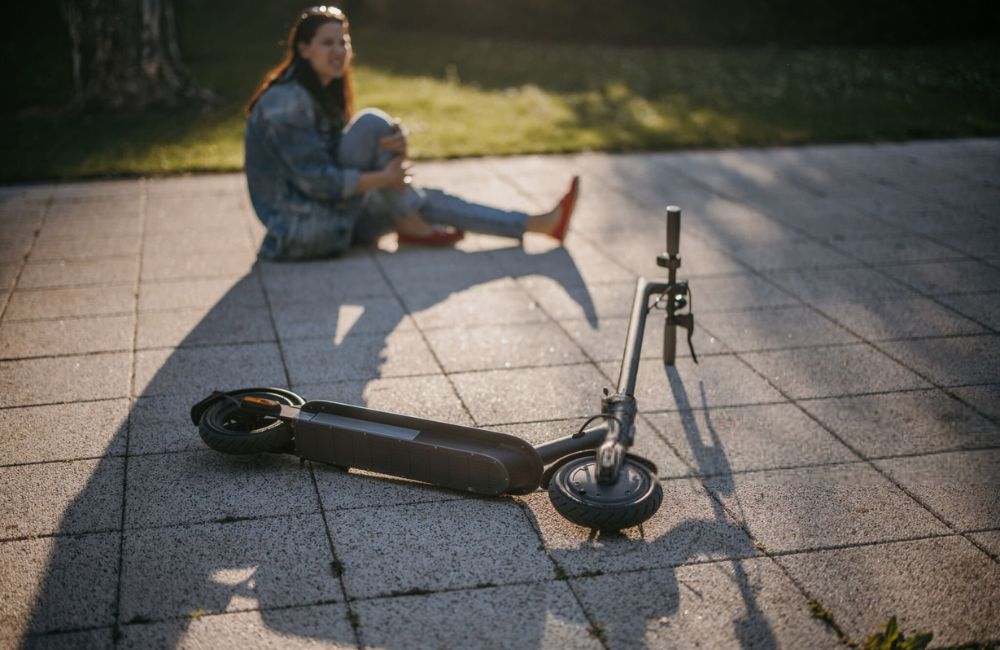

When you ride on an electric scooter in California, the last thing you expect is an accident. Yet, falls from scooters can lead to a variety of injuries, some of which may have long-lasting effects. Here are a few common injuries that can occur from scooter crash:
- Minor Injuries: Often, falls from scooters result in minor injuries. These might include cuts, bruises, and abrasions. While these injuries typically don’t require extensive medical treatment, they can still be painful and inconvenient.
- Head and Brain Injuries: Among the more serious consequences of scooter accidents is head trauma, which can range from concussions to severe traumatic brain injuries (TBIs). Wearing helmets can significantly mitigate this risk, but many adult e-scooter riders often do not wear them regularly.
- Broken Bones and Fractures: Falling off a scooter can easily lead to broken bones or fractures, especially in high-impact collisions or falls. Commonly affected areas include the wrists, arms, and legs. These injuries can require significant medical attention, including surgery and physical therapy.
- Internal Injuries: Not immediately visible, internal injuries can be some of the most dangerous. These include internal bleeding or damage to internal organs. Such injuries necessitate immediate medical attention and can have lasting health implications.
- Spinal Cord Injuries: In severe cases, scooter accidents can lead to spinal cord injuries. These injuries can result in varying degrees of paralysis and can have life-altering consequences.
- Emotional and Psychological Trauma: It’s important to acknowledge the emotional impact of scooter accidents. Victims can experience anxiety, depression, or even post-traumatic stress disorder (PTSD) following an accident.
Remember, recognizing and understanding your injuries is a vital first step towards rightful compensation. If you’re injured in a scooter accident in California, The Personal Injury Center is here to support you. We specialize in connecting you with legal professionals in your area who can guide you through the legal process. We aim to make sure you’re fully informed about your rights and assist in securing the compensation you deserve.
Understanding California’s E-scooter Laws
California’s legal framework for e-scooters is designed to ensure the safety of riders as well as pedestrians and other road users. Familiarizing yourself with scooter laws is crucial, not just for safe riding, but also for understanding liability in the event of an accident.
- Licensing Requirements: According to California Vehicle Code 21235, all e-scooter riders must possess a valid driver’s license or learner’s permit. This ensures that riders have a basic understanding of road rules, which is essential for safe operation on public roads.
- Helmet Laws: For riders under the age of 18, wearing a helmet is mandatory under the CVC 21235 (c). Helmets significantly reduce the risk of head injuries in accidents, a common concern with scooter falls.
- Speed Limits: E-scooters in California are subject to a maximum speed limit of 15 mph, as stated in California Vehicle Code 22411. This limit is imposed to ensure the safety of both the rider and those around them, as higher speeds increase both the likelihood and severity of accidents.
- Riding Locations: E-scooters should be operated in designated bike lanes where available, as per California Vehicle Code 21229. Riding on sidewalks is prohibited to protect the safety of pedestrians.
- Parking Regulations: California law requires that parked scooters should not obstruct pedestrian paths, following local ordinances. Improperly parked scooters can pose tripping hazards and contribute to accidents.
Violating these regulations can have significant implications in the event of an accident. For instance, if an accident occurs due to a rider not adhering to the speed limit or riding without a license, they may be deemed at fault or comparatively negligent, impacting the outcome of any legal claims.
Insurance and Liability in Fall-off Scooter Accidents in California
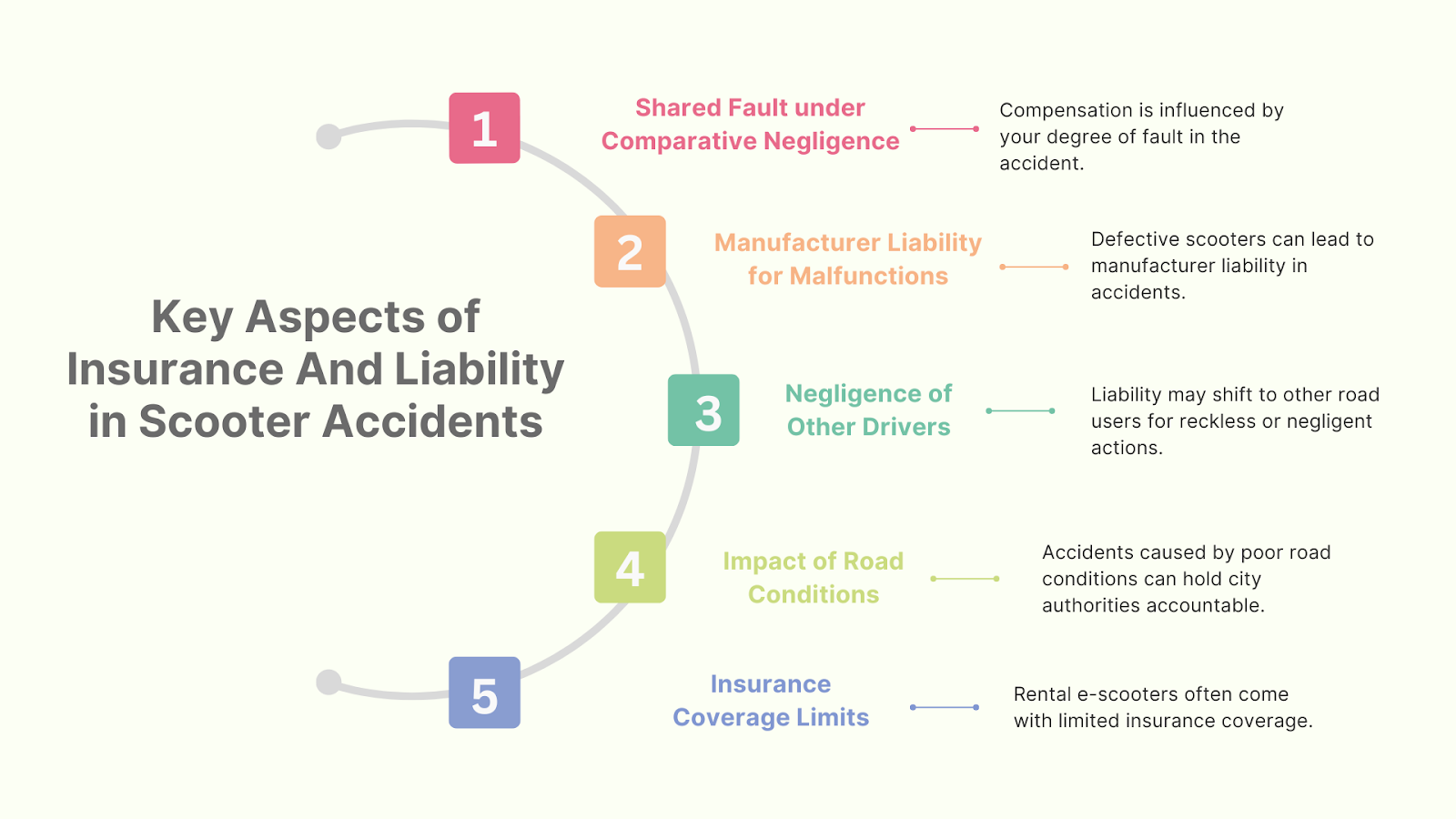

Dealing with the complexities of insurance and liability after an e-scooter accident can be overwhelming, particularly following a fall. It’s crucial to understand California’s specific laws and regulations, as they play a significant role in determining who is responsible and what insurance coverage may be applicable.
Determining Liability After a Scooter Fall
Under California’s comparative negligence system, as outlined in California Civil Code 1714, liability isn’t always straightforward. This law allows for the distribution of fault among multiple parties, including the injured person.
For instance, if a scooter rider is found to be 30% responsible for an accident (maybe due to not adhering to traffic laws), and another party is 70% at fault, the rider can still recover damages. However, their compensation will be reduced by their percentage of fault — in this case, by 30%.
Liability in scooter accidents often depends on the circumstances of the fall. Here are a few scenarios that could affect determining the fault.
- Scooter Malfunction: If a mechanical failure or defect caused the fall, the manufacturer or scooter company may be liable. This falls under product liability, and proving it usually requires showing that the scooter was defective and that the defect directly caused the injury.
- Negligence of Other Road Users: If the fall was caused by another driver’s negligence, like swerving into a bike lane or opening a car door without checking, that driver could be held liable. In such cases, evidence such as traffic camera footage or eyewitness testimonies becomes crucial.
- Road Conditions: Sometimes, poor road conditions, like potholes or unmarked construction sites, can lead to accidents. Here, the city or entity responsible for road maintenance might be liable. However, claiming against public entities involves specific procedures and tight deadlines, as per the California Tort Claims Act.
- Rider’s Responsibility: The rider’s actions are also scrutinized. For example, riding an e-scooter under the influence or ignoring traffic laws can shift more liability onto the rider.
Dealing with Insurance Companies
Handling insurance issues after a scooter accident in California can be complex and varies based on several factors.
Firstly, if the scooter involved was a rental, most rental companies provide some level of insurance coverage. This coverage typically includes liability insurance, which may offer protection if you cause harm to another person or property. However, it’s important to be aware that these policies have specific limitations and might not cover all the costs associated with the accident, especially if the damage is extensive.
In cases where the scooter is personally owned, the situation becomes more complex. Personal health insurance can cover medical bills resulting from the accident, but it does not address other types of damages, such as lost wages or emotional distress. This is where auto insurance can sometimes play a role. If the accident involves a motor vehicle, the driver’s auto insurance might cover some of your damages. However, coverage details can vary greatly based on the individual policy and the nature of the accident.
The Role of Uninsured Motorist Insurance in Scooter Accidents
Uninsured Motorist (UM) insurance plays a critical role in providing financial protection in scooter accidents, especially in California, where such coverage can be a lifesaver in accidents involving uninsured or underinsured drivers. While California law does not mandate UM coverage as part of auto insurance policies, having it can significantly benefit scooter riders.
If you’re involved in a scooter accident and the at-fault party lacks adequate insurance, UM coverage can step in to cover expenses such as medical bills, lost wages, and pain and suffering. This is particularly important in scooter accidents, as these vehicles often share roads with larger, more protected vehicles, increasing the risk of significant injury in a collision.
California Insurance Code section 11580 outlines the requirements and options for UM coverage, emphasizing its importance as a voluntary but highly recommended protection for drivers and riders alike.
Navigating Claims with UM Coverage
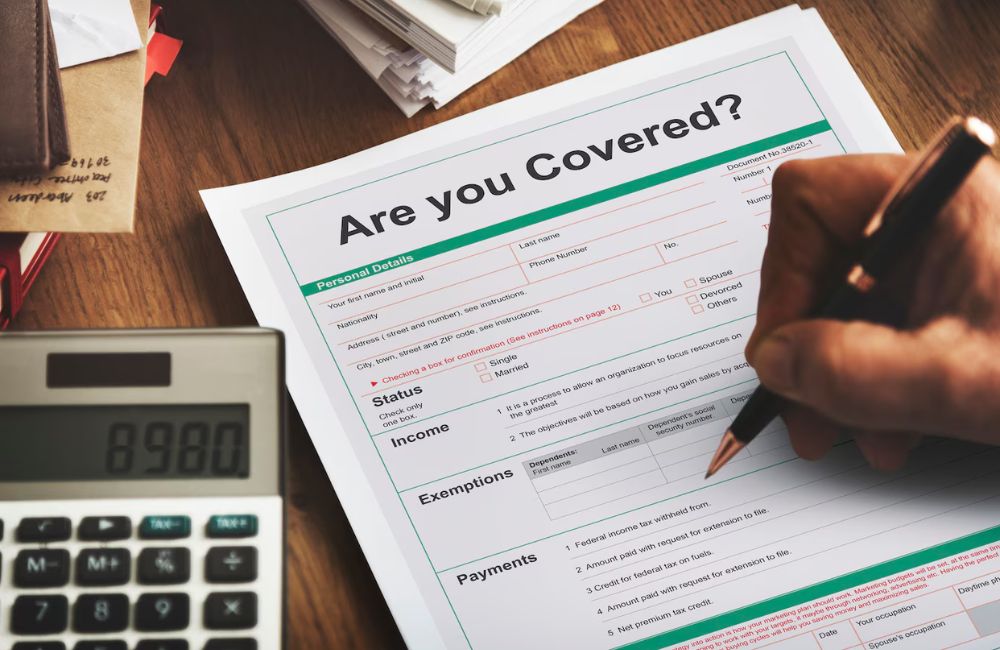

Navigating a claim under UM insurance requires understanding the specifics of your policy. In the event of an accident, it’s crucial to promptly report the incident to your insurance provider.
Documentation is key—gather as much evidence as possible from the accident scene, including photos, witness statements, and police reports. This evidence will support your claim and help ensure a fair evaluation by the insurance company. It’s important to remember that even with UM coverage, dealing with insurance claims can be complex.
Consulting with legal experts, such as those affiliated with The Personal Injury Center, can provide invaluable guidance. They can assist in understanding your policy, handling negotiations with insurance companies, and ensuring that your rights are fully protected under California law.
Scooter Accident in California: When Should You File for Compensation?
If you’ve been involved in a scooter accident in California, understanding the timeline for filing a compensation claim is crucial. The state’s laws provide specific guidelines on when and how you can seek compensation for your injuries.
The most critical aspect to consider is the statute of limitations. In California, the general rule for personal injury claims, including those arising from scooter accidents, is that you must file a lawsuit within two years of the date of the accident (California Code of Civil Procedure Section 335.1). This time frame is strict; if you fail to file within this period, you typically lose your right to claim compensation.
The Discovery Rule and Other Exceptions
There are exceptions to the statute of limitations, primarily revolving around the concept of ‘discoverability.’ If the injuries from the scooter accident were not immediately apparent and were discovered later, the statute of limitations may start from the date of discovery, not the date of the accident. This exception acknowledges that some injuries may not be evident right after an accident.
Other exceptions to the standard limitations period include cases involving minors and defendants who leave the state. For minors, the statute of limitations does not begin until they turn 18. Meanwhile, if the at-fault party leaves California, the time they are out of the state may not count towards the two-year period.
Hence, it’s essential to consult an expert without wasting time after experiencing a scooter accident. Delays can significantly affect your ability to receive fair compensation. The Personal Injury Center is here to offer support. Our team specializes in guiding you through the necessary timelines and connecting you with legal experts in handling scooter accident claims. Reach out to us for a consultation to ensure your rights are thoroughly protected.
Key Takeaways
|



